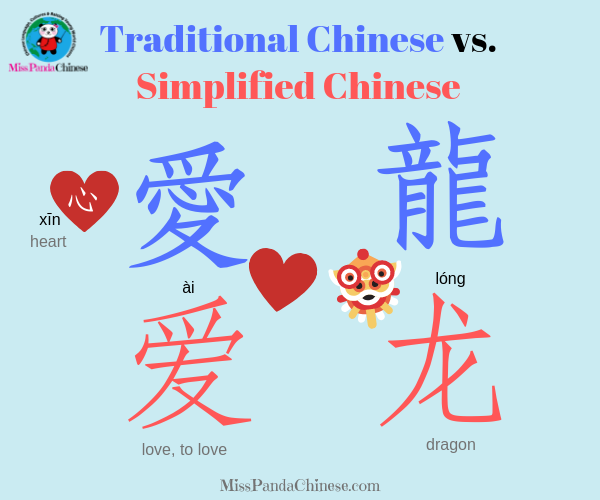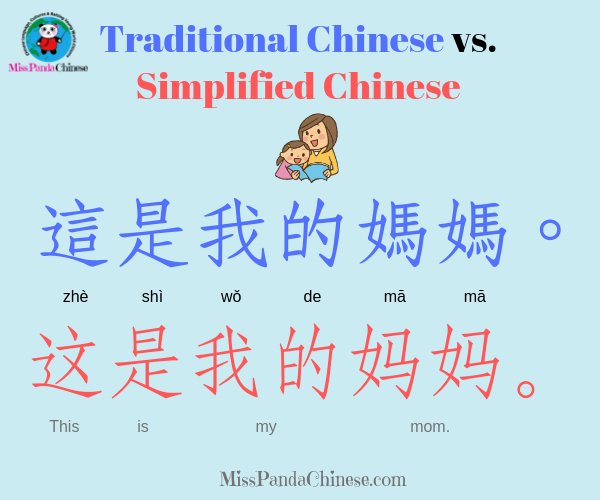Chinese Writing Systems: Traditional Chinese And Simplified Chinese
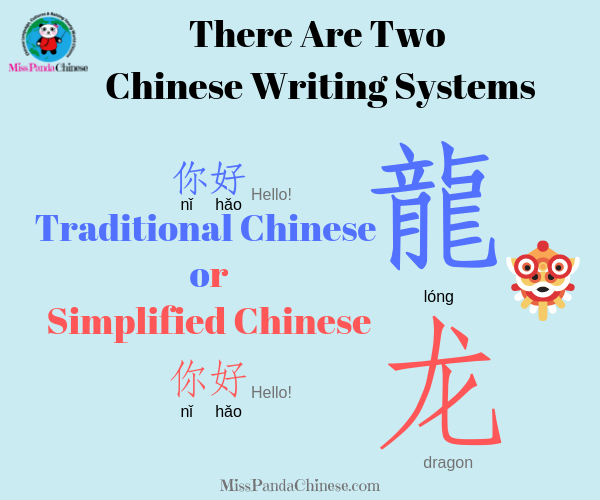
Let’s look at the two Chinese writing systems: Traditional Chinese and Simplified Chinese. I have color-coded the sentences for you to see the difference in the characters.
The blue Chinese characters are the traditional form (繁體字). The red Chinese characters are the simplified form (简体字).
Which should you learn? Traditional Chinese or simplified Chinese?
Taiwan, Hong Kong, and many overseas Chinese communities use traditional Chinese writing.
China and Singapore use the simplified Chinese writing system.
Culture Note: The Origin of Simplified Chinese
The print form of Traditional Chinese characters can be traced back to Qin dynasty (220-221BC) in China. From the 1950s to 1960s, Mainland China created a new set of simplified Chinese characters, many of which have their roots in ancient cursive Chinese calligraphy. This is the simplified Chinese text people read in print today.
That means, when you purchase a children’s book in Chinese you see books marked as a simplified Chinese edition or as a traditional Chinese edition.
One interesting fact I want to point out about this is that a reader will only see TRADITIONAL Chinese characters in a traditional Chinese edition of a book. But, a reader will see both simplified and traditional Chinese characters in a simplified Chinese edition of a book.
Traditional Chinese characters are the foundation of Chinese writing.
Educated people from China and Taiwan can read both writing systems. As a Chinese language learner, it is helpful to understand traditional Chinese, as it is the foundation of Chinese writing.
Understanding the structure of basic Chinese characters will help a learner remember Chinese characters. Again, many of the basic Chinese characters are the same in both traditional and simplified forms.
If there is a difference between the simplified form and the traditional form, it is easy to see when you put both writing forms together. Here is an example. Do you see the difference in the character, “mom – mā”?
Look at the example in the picture above. The blue characters are in traditional Chinese. The red characters are in simplified Chinese. Do you see any differences?
Simplified Chinese characters are formed based on traditional Chinese characters and some are transformed from Chinese cursive calligraphy styles.
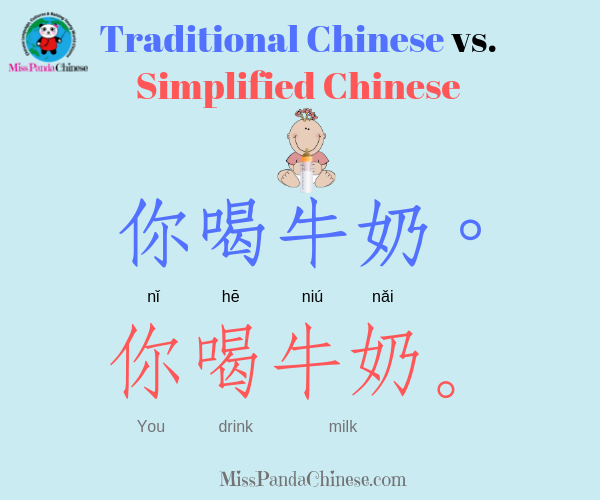
Let’s look at another example in the picture above. Can you spot the difference?
Yes! They are exactly the same. The simplified version of this sentence has every character in traditional Chinese.
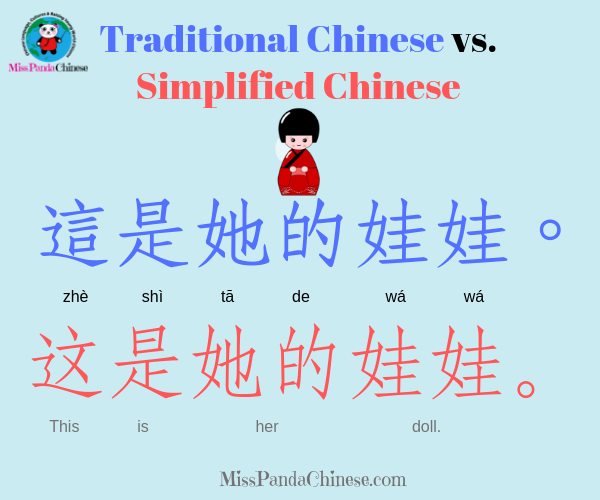
Last but not least, let’s look at the picture above. Do you see the difference?
There are many parents and learners who ask me about which Chinese writing system to go with. I always tell the stories of my own two children and my students.
Both of my kids started learning Chinese with the traditional Chinese writing system. I read to them with books in traditional Chinese from the start. The books I had at the time were mostly in traditional Chinese. We practiced writing in the traditional form as well. However, I also have introduced simplified Chinese to them as they grow.
For my students, I start with one system and I introduce the other system along the way.
Adult learners, in general, can transfer their knowledge from one writing system to the other in a short period of time.
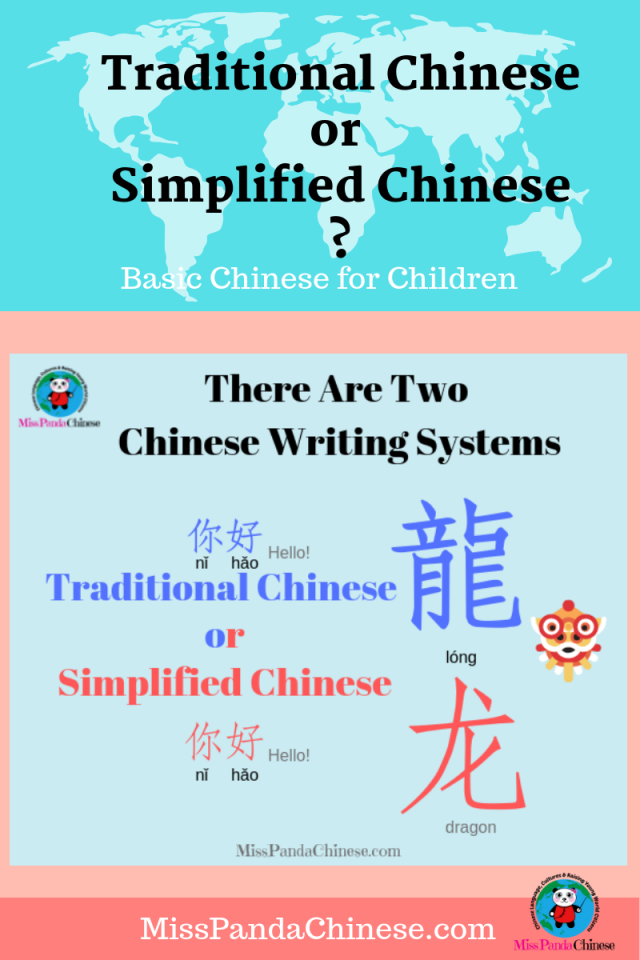
No matter what writing system you decide to learn at this time, gradually you will get to know the other form as you advance in your Chinese language learning. However, be consistent with the writing system that you choose to learn at the beginning.
If you decide to go with the traditional form, stick to it with the visual materials, such as posters, flashcards, sight words, stories, books, and character writing practice. The same applies to the simplified writing form. Use visual tools, like a word wall and flashcards to “play” with the words in short sentences and simple stories.
After all, it is all early literacy building. It all adds up!
Read the additional info below if you are interested in knowing which Chinese writing system the top universities are teaching to their students.
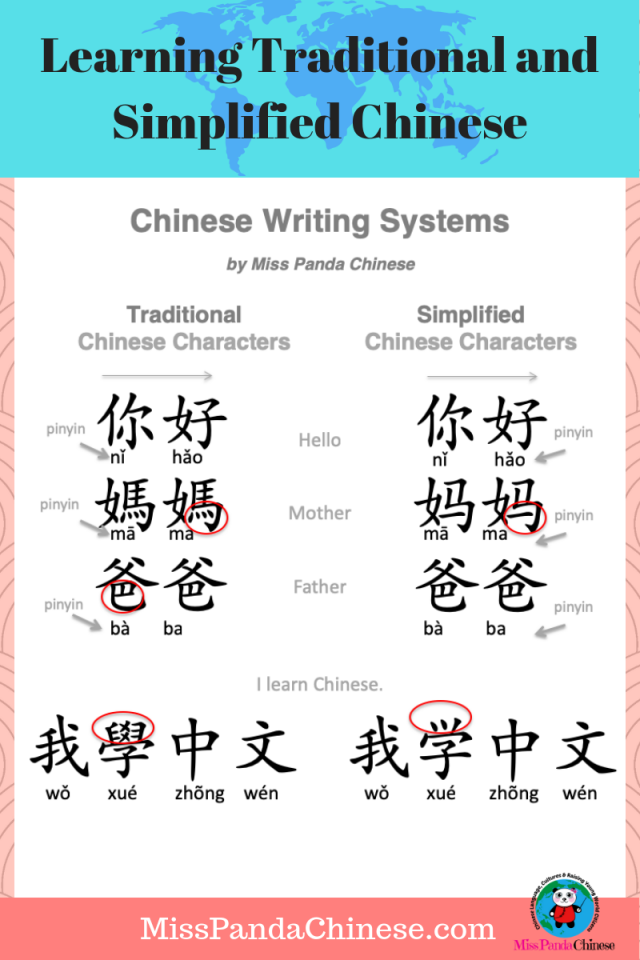
Examples at the University Level:
Harvard University starts students with traditional Chinese at the elementary level and then introduces the principles of simplified characters at the end of the elementary level.
Yale University teaches students simplified Chinese.
College of the Atlantic starts with traditional Chinese at the introduction level program.
UCLA Both traditional Chinese and simplified Chinese reading in the Intermediate level course.
UC Berkeley Both traditional Chinese and simplified Chinese reading in the Intermediate level course.
